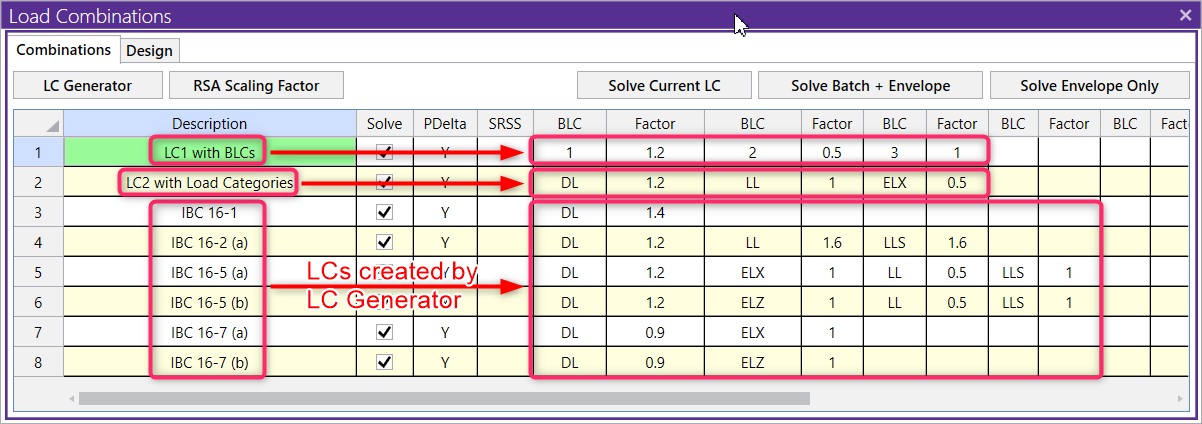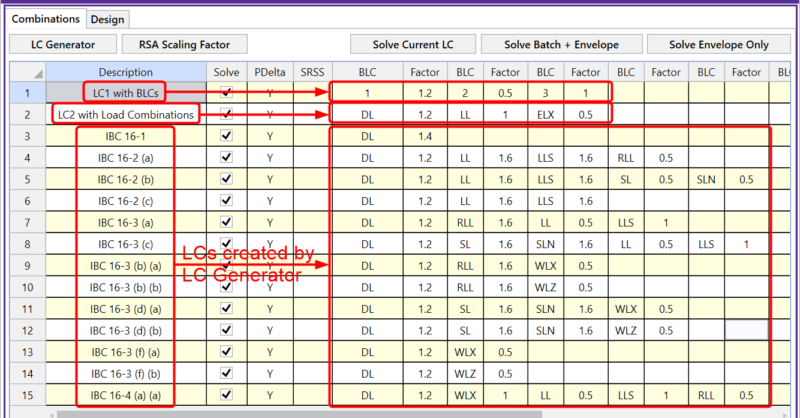Products
Learn
Support
Company
One of the questions our support team receives often is the difference between Basic Load Cases (BLC), Load Categories and Load Combinations (LC). Understanding how these containers are used and how they work together when loading a structure is an essential part of creating an accurate model in RISA.
When loads are defined, they are assigned into Basic Load Cases (BLC's). BLCs are the basic container of the final load combinations applied to the structure. A BLC can consist of any type of load; such as nodal loads, distributed loads, member point loads, surface loads, etc.
The Basic Load Cases (BLC) can be assigned to different Load Categories such as Dead Load (DL) and Live Load (LL). It is also possible to assign different BLCs to the same Load Category. The BLCs and Load Categories can be used together to define Load Combinations that will be used for the analysis.

Load Categories are predefined groups in the program such as Dead Load (DL), Live Load (LL) and Earthquake Load (EL) that cannot be modified or added to by users of the program. Many of these groups are associated with IBC and ASCE 7 provisions for the combination of loads. The existing categories are showed in the dropdown list in the Basic Load Cases spreadsheet. For special loads that do not fit in the existing categories, OL-Other Load categories can be used as the group for those loads.

Note: Both Basic Load Cases and Load Categories can be viewed and edited in the Basic Load Cases Spreadsheet.
Load Combinations are the final combined factored (or unfactored) loads that the program uses in analysis and design. Users can choose to create load combinations that reference either specific Load Categories and/or Basic Load Cases. .
The Basic Load Cases (BLC) are referenced by the BLC numbers (e.g. 1, 2, 3, etc.) in the Load Combination Spreadsheet. The Load Categories are referenced by their abbreviations (e.g. DL, LL, ELX, etc.). For Load Combinations created by our LC Generator based on building code requirements, Load Categories are used in the LCs as specified in the code.

A commonly seen mistake in model creation is the disconnect between the Load Combinations (LC) spreadsheet and the Basic Load Cases (BLC) spreadsheet. For example, if Load Categories (e.g. DL, LL) are used in the Load Combinations spreadsheet, but there are no Load Categories used in the Basic Load Cases spreadsheet, the program will report zero forces in the solution because there is no load used in analysis.
Overall, understanding the difference between and how Basic Load Cases, Load Categories and Load Combinations work together is essential in creating accurate RISA models.
